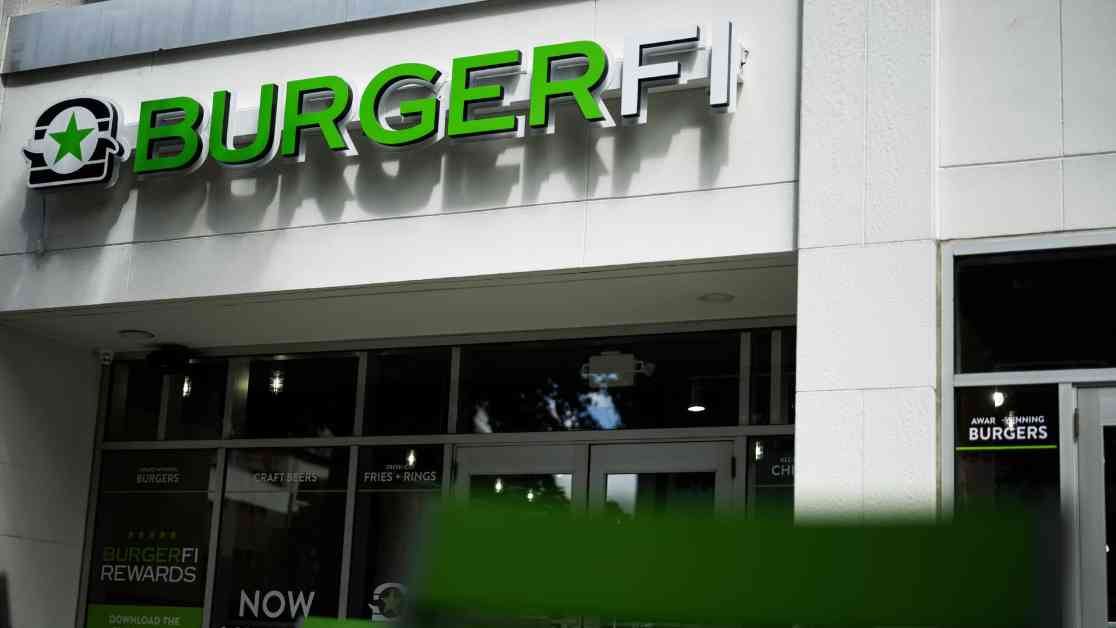BurgerFi, a popular restaurant chain known for its higher-quality burgers, recently made headlines as it filed for Chapter 11 bankruptcy protection. This move came less than a month after the company expressed concerns about its ability to continue operations. With declining traffic and high interest rates plaguing the restaurant industry as a whole, BurgerFi is just one of many establishments that have resorted to bankruptcy in an effort to revitalize their businesses. Let’s delve deeper into what led to BurgerFi’s decision to seek bankruptcy protection and explore the implications for the company and its stakeholders.
The Rise and Fall of BurgerFi
Founded in 2011, BurgerFi quickly gained a reputation for its gourmet burgers and commitment to quality ingredients. The company’s emphasis on sustainability and environmentally friendly practices also set it apart in the competitive fast-casual dining landscape. In 2020, BurgerFi made a significant move by going public through a deal with a special purpose acquisition company, a trend that was gaining popularity as an alternative to traditional IPOs due to its efficiency and reduced regulatory scrutiny.
Shortly after going public, BurgerFi made another strategic acquisition by purchasing Anthony’s Coal Fired Pizza & Wings for $156.6 million. This expansion signaled BurgerFi’s ambition to grow its presence in the restaurant industry and diversify its offerings. However, despite these efforts, the company faced challenges that ultimately led to its decision to file for Chapter 11 bankruptcy protection.
The Financial Struggles of BurgerFi
According to the bankruptcy filing, BurgerFi has assets valued between $50 million to $75 million, while its total debts range from $100 million to $500 million. The company’s financial woes were further highlighted in its most recent quarterly report, which showed a revenue of $42.9 million and a net loss of $6.5 million. Same-store sales at BurgerFi’s flagship burger chain plummeted by 13%, reflecting the broader challenges faced by the restaurant industry amid changing consumer preferences and economic uncertainties.
With 162 restaurants under its two brands, BurgerFi relies heavily on its franchise model, with approximately half of its locations operated by franchisees. The company’s reliance on franchise operations poses additional complexities in navigating the bankruptcy process and ensuring the continuity of its business operations. As BurgerFi works through its restructuring efforts, it will be crucial for the company to engage with its franchise partners and stakeholders to chart a path forward that balances financial stability with operational sustainability.
The Road Ahead for BurgerFi
As BurgerFi embarks on its Chapter 11 bankruptcy proceedings, the company will need to develop a comprehensive restructuring plan that addresses its financial obligations, operational challenges, and strategic priorities. This process will involve close collaboration with creditors, investors, and other key stakeholders to negotiate terms that are mutually beneficial and sustainable in the long term.
While the road ahead may be challenging, BurgerFi’s decision to file for Chapter 11 bankruptcy protection offers the company an opportunity to reassess its business model, streamline its operations, and position itself for future growth. By addressing its financial constraints and operational inefficiencies, BurgerFi can emerge from bankruptcy as a stronger and more resilient player in the competitive restaurant industry.
In conclusion, BurgerFi’s Chapter 11 bankruptcy filing underscores the ongoing challenges faced by restaurant chains in an increasingly turbulent and competitive market environment. As the company navigates the complexities of the bankruptcy process, it will be essential for BurgerFi to leverage this opportunity to restructure its business, strengthen its financial position, and reinvigorate its brand to regain consumer confidence and loyalty.






















